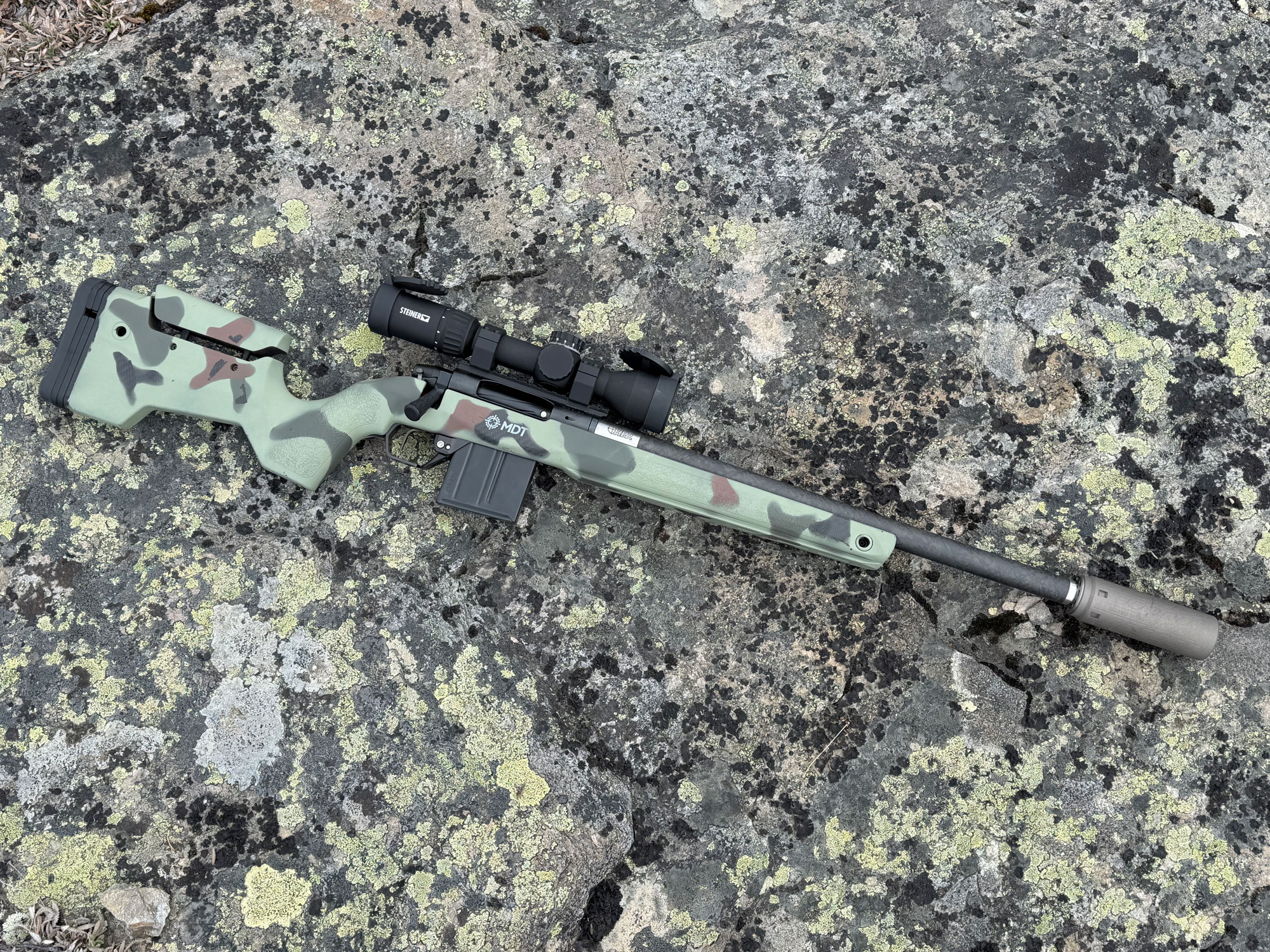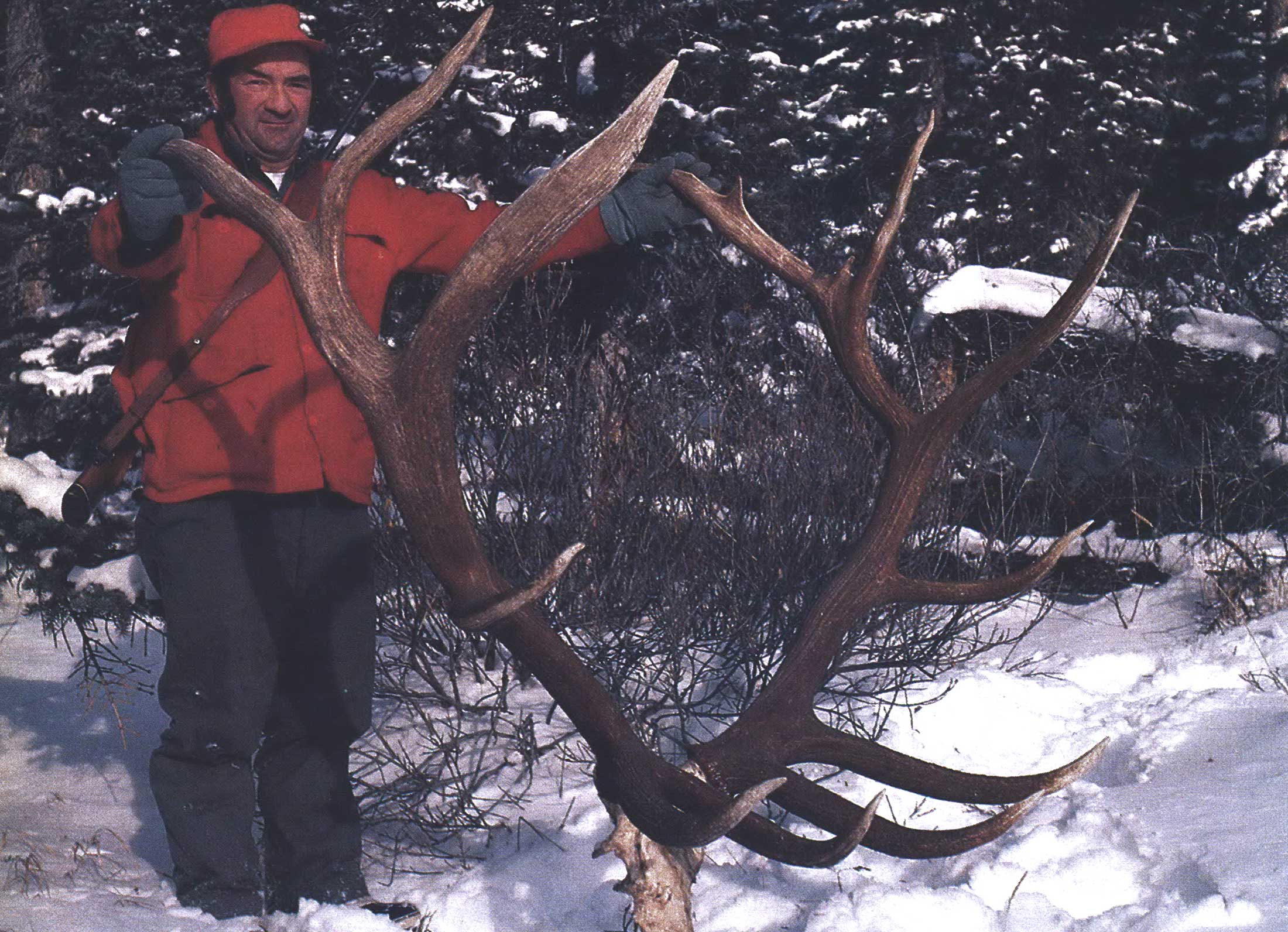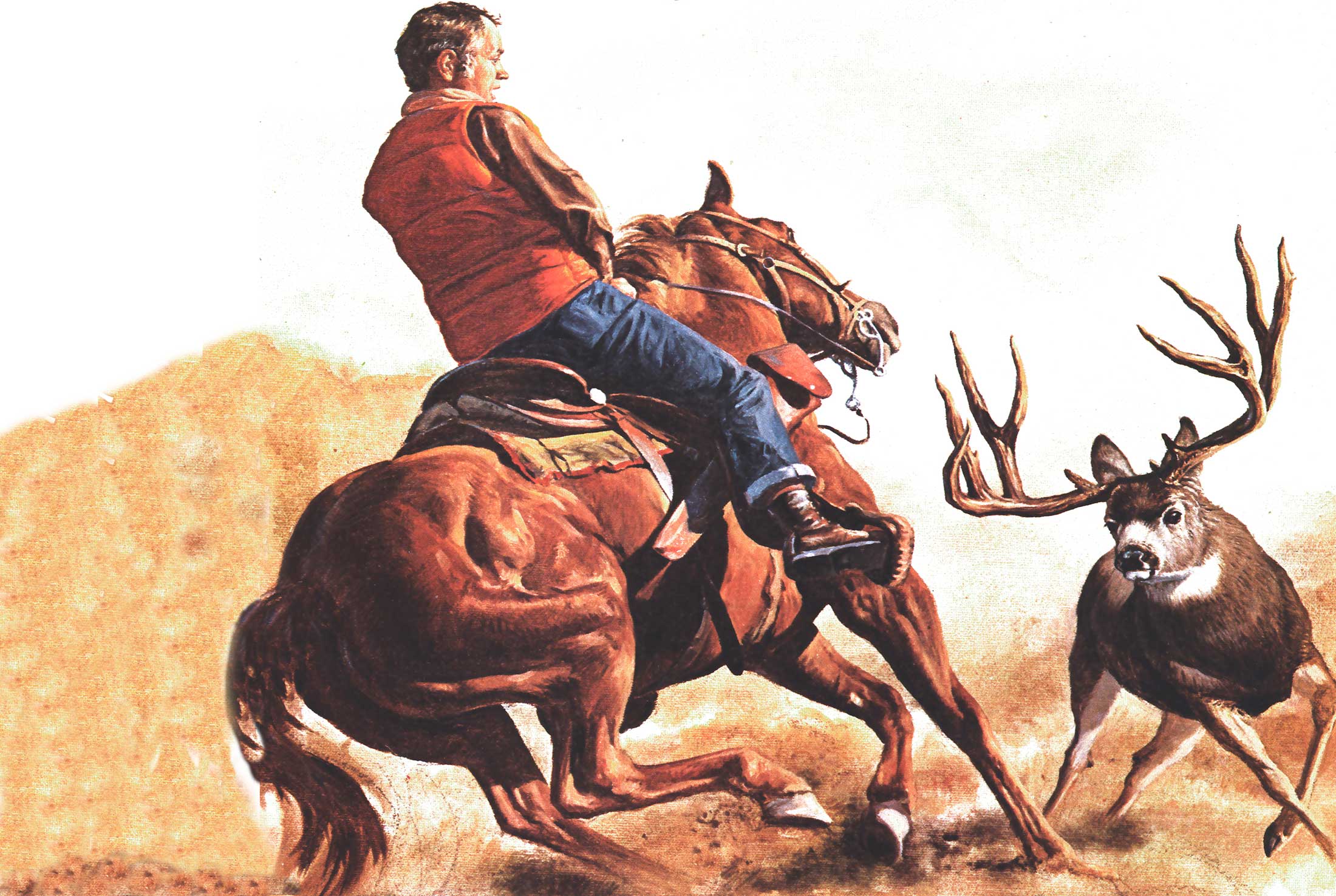I’m Not Packing An Ultralight Gun for Sheep This Year. Here’s Why

My sheep hunting rifles have looked very similar over the years. When I started as a broke 18-year-old Alaska resident, I took my Remington Model 710 in .30/06. Afterward, I upgraded to a Model 700 in .25/06. Gradually over the years I refined my setup, using both factory and custom rifles with one primary goal — minimizing weight. I used what worked, and fitted many of my rifles with the same hardware and accessories. This year I’m making a radical departure from that formula.
My Old Sheep Rifles
I have packed numerous rifles through the mountains, but most of them fit within the following specs:
- Cartridge: .25/06, 6.5 Creedmoor, or .270/.280 AI
- Scope: Leupold VXII 2-7x33mm CDS
- Stock: Synthetic sporter-style
- Suppressor: None
- Bipod: Spartan Precision Javelin
- Overall Weight: 7.25 to 10 pounds
To many, the ideal sheep rifle is a minimalist rig with a pencil-thin barrel and classic lines. It’s equal parts romanticism and practicality. But keeping in mind that sheep hunting rifles have been adapted and refined since the days when Jack O’Connor was kicking rocks, I want to keep an open mind and recognize that they will continue on that path.
My 2025 Sheep Rifle
Several months ago I assembled the rifle that would rise to become my clear choice to take sheep hunting this season. I don’t consider it the ideal sheep rifle in every way — more on that later — but it is the most confidence-inspiring mountain hunting rifle I’ve shouldered.
Specs
Cartridge: 22 ARC
I’ve been interested in using a .224-caliber sheep rifle for many years. After reading of legendary Alaskan market hunter and predator control agent Frank Glaser’s affinity for his .220 Swift on hooved game (including moose), I speculated that a .22/250 would make a great sheep gun. Wild sheep are not very tough or large animals, and not difficult to kill. Standard-weight bullets (55 grains or so) for the .22/250’s slow-twist barrel gave up a lot of wind drift, however, and there were few options to use heavier bullets at that time. My interest was reignited when I began testing the 22 ARC and, after shooting a moose and a couple bears with the cartridge, I’m immovably confident in its aptitude for sheep.
For this build, I used a Zermatt Origin action, for which Eric Hoover of Hoover Precision Rifles cut, chambered, and threaded a 20-inch Proof Research carbon-fiber blank. It’s one of the most consistently accurate rifles I’ve shot.
For the task, I’ve hand-loaded 80-grain Hornady ELD-X bullets atop 28 grains of Varget, which produces 2,973 fps velocity at the muzzle. It falls below 2,000 fps between 550 and 600 yards and, in a 10mph crosswind, drifts less than the 6.5mm 140-grain Sierra MatchKing used in one of my NRL Hunter loads — and only a tenth of a MIL more than my 6mm Creed 108-grain ELD-M load. Effectively I have all the velocity I need out to any reasonable distance, and wind drag that’s competitive with many larger 6mm, 6.5mm, and even .30-cal bullets.
The real appeal of a .224 cartridge like the 22 ARC is that you don’t have to give up wind drift or impact velocity to gain shootability. When the conditions are right, I can usually watch bullet trace all the way to the target. I did a lot of testing with the 22 Creedmoor as well, and the gains in velocity — about 150 fps — weren’t worth the less consistent accuracy.
Scope: Steiner H6Xi 2-12x42mm FFP
This year I’m breaking from my long-enduring practice of topping my sheep rifle with a Leupold VXII 2-7x33mm CDS scope. I still think those — and more updated versions — are a great choice, but I haven’t been able to stop shooting the Steiner H6Xi since I got it. It’s a first focal plane scope, but the 2-12x magnification range and overall weight of 23.2 ounces aren’t overkill for a mountain gun. It’s double the weight of the 12-ounce 2-7×33 Leupold, but still comparable to commonly-fielded scopes like the VX6HD 3-18×44 at 22 ounces.
This choice, in part, is also due to my conversion to the gospel of milliradians. It’s a better, more intuitive system than MOA, and I’ve generally adopted it for most of my shooting. In most cases, a pre-printed ballistic turret will still work well at normal hunting ranges, but this allows an increased level of precision.
At 12 inches, it’s a relatively compact scope, and the single-revolution turret is simple and straightforward. With the one-piece 20-MOA Zermatt rail, the upward travel is sufficient to engage targets to 1,100 yards or more, but the limited rotation and hard zero stop make it impossible to unknowingly put an extra revolution on the elevation.
The STR MIL reticle is small at low magnification, but useful and very precise for wind holds at longer distances and higher magnifications. I mounted it with 30mm Seekins Precision rings and added a level as well.
Stock: MDT CRBN Stock
MDT, known for both their precision chassis and HNT 26 lightweight folder, introduced the CRBN stock for 2025 and It’s one of the best-shooting stocks you can find for the weight. Many shooters have adopted it for NRL competition in the Open Light division, which requires rifle systems to weigh no more than 12 pounds. At only 27 ounces (30 ounces with bottom metal), the CRBN stock is an attractive and versatile option for hunters too.
It features a two-ounce adjustable comb piece and length of pull can be tuned with quarter-inch shims. The three-ounce hunter bottom metal fits flush and features a magazine lock, and the fore-end features an integral Swiss ARCA rail and M-Lok slots.
I have used this stock extensively on this 22 ARC build, but also used it to place in the Open Light category at the Alaska Wilderness Hunter NRL match using a Zermatt TL3 action and Proof barrel chambered in 6.5 CM. Recoil management is superb and this stock helps make the rifle easy to shoot from a variety of field positions.
Suppressor: B&T Print XH RBS SC 5.56
Until now, I’ve never taken a suppressor on a sheep hunting rifle. That’s both due to the prohibitive weight of virtually any common suppressor (until recently), and because none of my sheep rifles were threaded. That’s changed now.
I’ve paired this rifle with B&T’s short printed hybrid 5.56mm suppressor. At 10 ounces total, it’s slightly heavier than the lightest .30-cal cans, but more compact at 5 inches long. The extra weight of the B&T Print XH cans comes from their inconel blast baffle and non-spark front cap. It’s designed for high-volume use with a 5.56, but the small weight penalty is worth the compact size. I have it fitted with a Silencerco titanium direct-thread adapter that fits nearly flush into the HUB mount.
Bipod: MDT Mountain Bipod
I’ve been a steadfast user of Spartan Precision Javelin bipods for years. These light and simple bipods are intuitive, reliable, and still an excellent option. I’m changing things up this year and trying the MDT Mountain Bipod, designed and manufactured by MTN Gear out of New Zealand.
It’s an ultralight bipod that weighs 5.8 ounces and offers unrivaled versatility. It has twist-lock carbon-fiber legs fitted to a lightweight hub that clamps onto a Picatinny or ARCA rail (depending on model). Leg splay is adjustable and similar to the larger CKYE pod bipods, and tilt is tension adjustable.
Final Thoughts on my 2025 Sheep Rifle
Ultimately, I’d like to build or find a lighter rifle than this one that still offers comparable precision. The action is oversized for the short 22 ARC cartridge, and lightweight AICS magazines aren’t widely supported for the ARC family yet. I’d ideally like to have something like the NULA 20S mini action chambered in 22 ARC for an ultimate ultralight build.
That said, the bit of extra weight is a small price to pay for the confidence that I have in this rifle. I’ve put more than a thousand rounds through it in the past few months, and it never fails to put a smile on my face. It’s much easier to shoot well — and shoot at higher volumes — than any ultralight sheep rifle I’ve used. It’s a rifle I can’t stop shooting, and I haven’t fired a single round in the past month, out to 700 yards, that wouldn’t have hit the vital zone of a Dall ram. At more reasonable hunting distances, that’s unshakable confidence.
The price tag on a build like this is staggering, but in line with other premium rifles — and less expensive than many. Assembling the best components does offer some real performance advantages, but don’t forget that it’s not a substitute for aptitude or hard work. I’m pursuing my ideas of the ultimate sheep rifle, but I also remember that there’s a $500 Winchester XPR in my gun safe that’s killed more rams than 99% of the top-shelf dentist rifles out there.
Read the full article here









